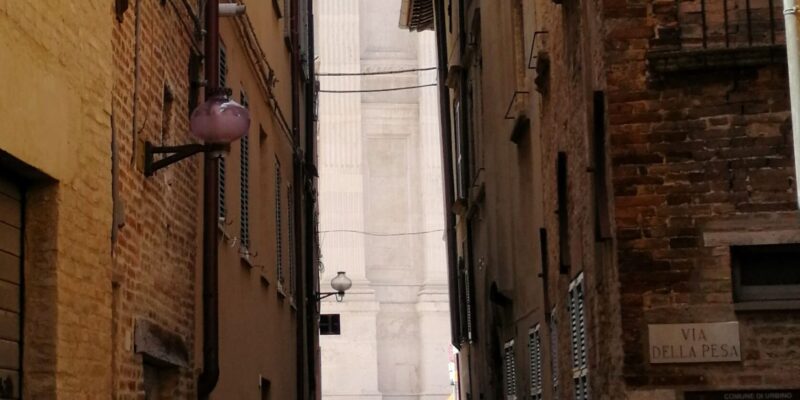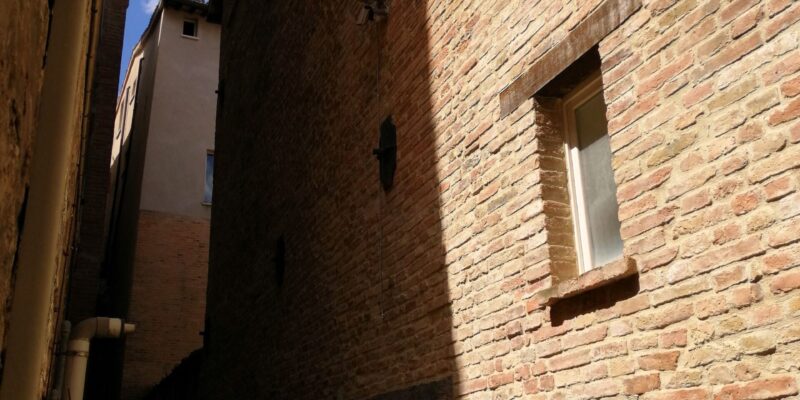In a courtyard with access from Via dei Veterani 12 (formerly Via Merciari) it is still possible to see the building that housed the ancient synagogue used by the Jews in Urbino. The building was the Community’s landmark until 1633 when, following the annexation of the duchy to the Papal States, the ghetto was instituted and the Jewish population was confined in a different area of the city. It is interesting to note that the 14th-Century brick façade, which has since been partially altered and opens onto an inner courtyard, for a short time overlooked Piazza Grande with the Cathedral and the Palazzo Ducale, following the demolition, in 1573, of the Pucci building on the opposite side.
With the move to the ghetto, the new synagogue received the furniture that had belonged to the synagogue in Via dei Veterani. This included one of the most ancient pieces to date: a Renaissance aron hakodesh dating back to the second half of the 15th Century, now on display at the Jewish Museum in New York. According to tradition, it was a gift from Duke Federico da Montefeltro, perhaps to counterbalance the financing of the Corpus Christi altarpiece, which is painted with scenes of a strongly anti-Jewish matrix (Paolo Uccello, 1467-1468, Galleria Nazionale delle Marche).
With the 19th-Century renovation of the synagogue in the ghetto, the aron was placed in the adjacent study rooms, until in 1906, for economic reasons, it was sold in the antiques market.
Via Veterani 12


